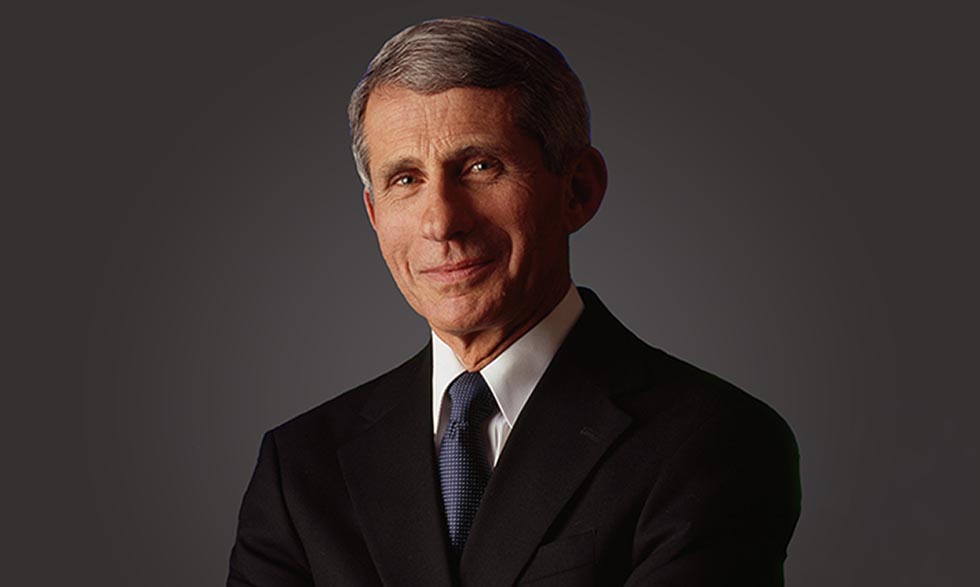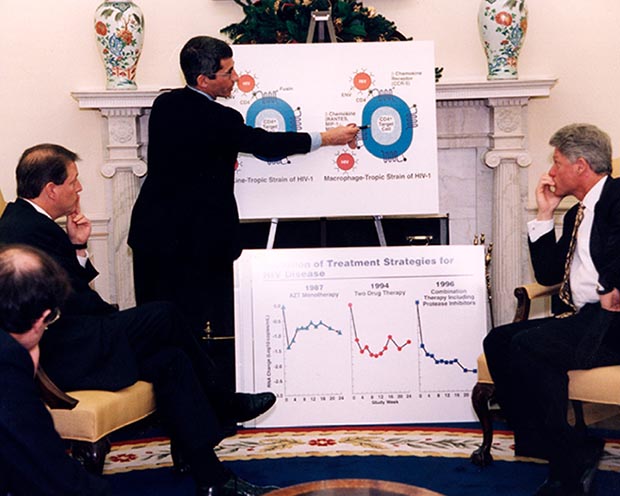
Last updated on March 2nd, 2023 at 09:06 am
Anthony S. Fauci, M.D., former Director of the National Institute of Allergy and Infectious Diseases (NIAID), served the American public for over five decades. A doctor, scientist, and infectious disease expert, he contributed to groundbreaking discoveries that saved countless lives. He retired from public service in December 2022.
Over the years, Dr. Fauci spoke with NIH MedlinePlus Magazine about antibiotic resistance, vaccines and community immunity, and the COVID-19 pandemic. He sat down with us again to reflect on his long career with NIH, discuss the challenges of science communication, and share his advice with young people who are interested in a career in science.
You’ve served the American public for over 50 years. What has this work meant to you?
I’ve had the privilege and opportunity to spend my entire professional career―a total of 54 years―at NIH. It has been an extraordinary and rewarding experience that has allowed me to wear many different hats over the years. I first came on as a trainee, where I learned fundamental basics that I would use for decades. I was introduced to the disciplines of infectious diseases and immunology and the interface between them. I gradually worked my way to senior investigator, to section head, to lab chief, and finally to the director of the institute.
It has meant everything to me; it’s been my entire life.
What is your favorite memory from your time at NIH?
There are so many memories, or landmarks, that come to mind when I think about my long career here at NIH.
One that comes to mind is my early work on developing therapies for inflammatory vasculitis syndromes [a group of disorders that cause inflammation of the blood vessels]. I worked with my original mentor Sheldon Wolff [M.D.] to develop a game-changing therapy to successfully treat a disease that previously had a very high mortality rate.
Then when HIV came along, I turned my efforts to studying how it affected the body. This was important because understanding the virus better allowed us to begin developing interventions to prevent and treat it. So that’s another memory that I hold dear.
When I became the Director of NIAID, we started an effort to develop safe and effective drugs for treating HIV. I’ll never forget the moment [in 1996] when the results of the trial of the triple combination of drugs (including the protease inhibitors) came out. The feeling was just extraordinary: to see the results of a trial that now made it possible for persons living with HIV to live an essentially normal life.
Another very memorable point in my career―and in my life―was when [former President] George W. Bush asked me to help build the President’s Emergency Plan for AIDS Relief (PEPFAR) program. I spent eight months working on that program which now, 20 years later, has led to saving 20 to 25 million lives.
Most recently, there are the extraordinary results of the COVID-19 vaccines, which our group at the NIAID Vaccine Research Center played a major role in developing and which have saved the lives of millions of people.
There are painful memories as well. In the first few years of HIV, almost all of my patients admitted to the NIH Clinical Center died because we had no intervention. In fact, we were taking care of patients before we even knew that HIV was the cause of AIDS. When the virus was discovered in 1983 and 1984, then we were able to start doing things to counter this mysterious virus.
You’ve led and contributed to groundbreaking discoveries in infectious and immune-mediated diseases that have saved countless lives across the world. What does that mean to you?
It’s very humbling to know that the work you are doing leads to saving actual lives, particularly being involved in something as expansive as PEPFAR. It’s not something that you would brag about, but it’s something that you feel honored to have had the opportunity to participate in. And [I’m] thankful for the many colleagues who helped along the way.
What is something that you wish more people knew about NIAID?
NIAID is truly an extraordinary institution. The groundbreaking work by our own scientists―and the work that we funded through grants and contracts―led to important discoveries that have saved many, many lives not only here in the United States, but all over the world because of the global nature of infectious diseases.

Dr. Anthony Fauci, standing, presenting on HIV/AIDS to former President Bill Clinton, right, and former Vice President Al Gore, left, at the White House, 1996.
You’ve spoken before about the importance of knowing your message, knowing your audience, and delivering that message to them clearly and concisely. Why is this so important, especially in science communication?
The purpose of communicating is for your audience to understand what you are talking about. You need to know who you are speaking to, and you’ve got to have a crystal-clear message. If people don’t understand what you’re talking about, you are wasting your time and theirs.
Often, scientists instinctively want to show people how knowledgeable they are, [so] they speak in complicated terms and people have no idea what they are talking about.
How do you balance the public’s desire for quick results in solving health problems with the slow nature of research?
You communicate with them. You try to explain that the scientific approach often isn’t linear, it’s up and down and up and down. This isn’t always intuitive to people. Science comes up with answers, but it isn’t going to be quick. There are as many failures as there are successes on the road to understanding a particular issue related to a disease. Scientific discovery isn’t all victory, and there are often a lot of disappointments.
What was the hardest lesson you learned in becoming a public figure for medical research?
You have to deal with an extraordinary amount of misinformation and disinformation that’s being spread throughout the world. Social media in particular makes it possible for confusing bits of disinformation, conspiracy theories, and outright untruths to spread almost instantaneously. When you are a scientist, your goal is to use the scientific method to gather information, data, and evidence to improve people’s health and lives. It is very difficult to fight against misinformation and disinformation.
You’ve said that the next phase of your career will focus on advancing science and public health and on mentoring the next generation of scientific leaders. What would you say to young people considering a career in science, medicine, or public health?
A career in science and public health can be extraordinarily rewarding and gratifying. I’ve learned that in any endeavor or aspiration in life, you will be more effective, accomplish a lot more, and feel better about what you do if you are passionate about it.
If you are interested in a career in science, I encourage you to choose an area that you feel strongly about and that excites you. That excitement will generate the energy for you to perform at an even higher level than you would imagine.
Is there a final message that you would like to convey to the public that we haven’t covered here yet today?
Yes—what an extraordinary institution the NIH is. There is an electrifying, energizing atmosphere here on campus among so many bright, committed people. I don’t think the rest of the world can fully appreciate how extraordinary this is and how fortunate those of us who have had the opportunity to be here are.
This interview has been edited slightly for length and clarity.
